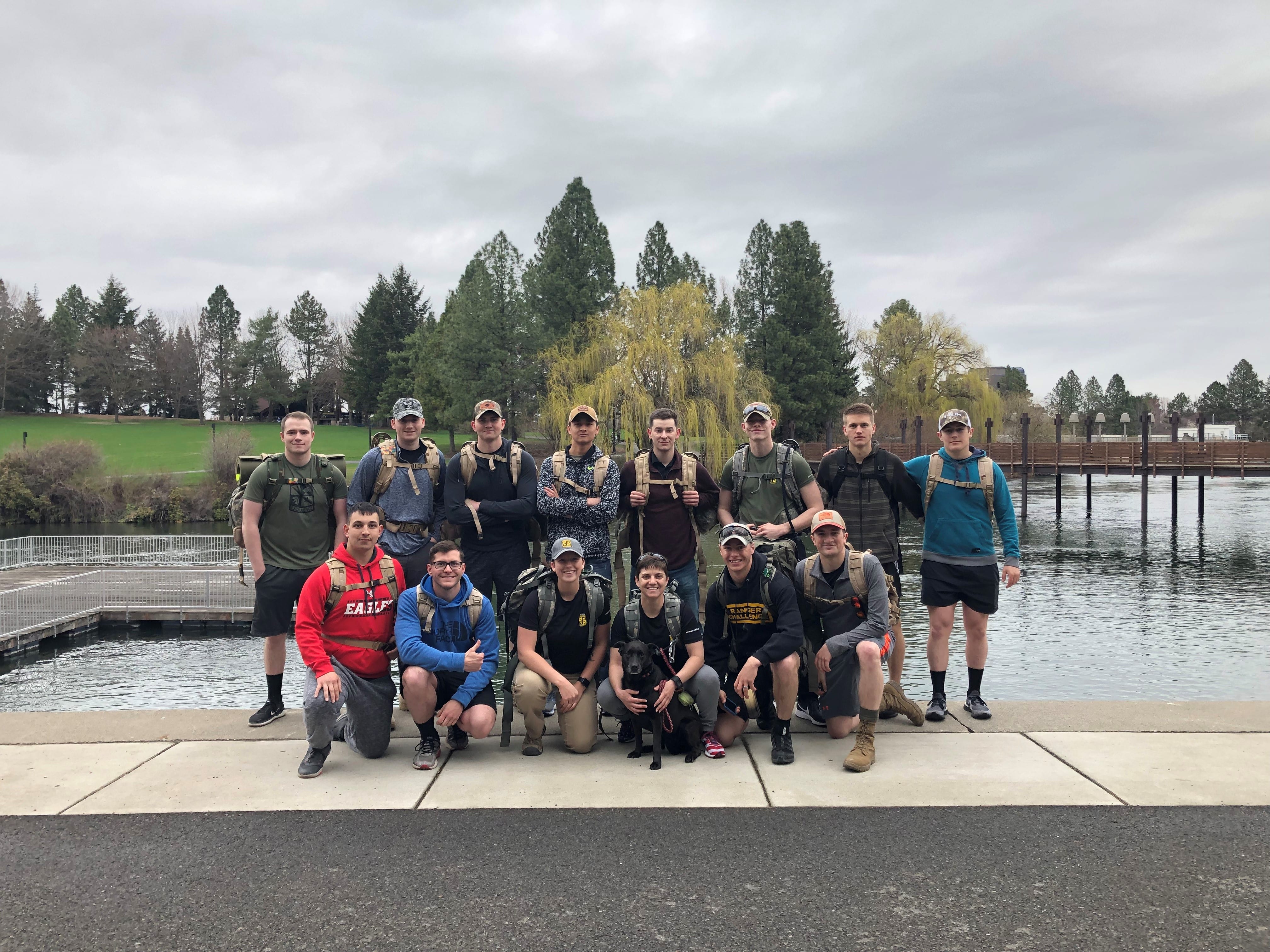Spring FTX Day 1
After a successful helicopter insertion operation from the Eastern Washington University (EWU) campus to Camp Seven Mile; Cadets from the EWU Reserve Officer Training Corps (ROTC) program began executing their Spring Field Training Exercise (FTX).
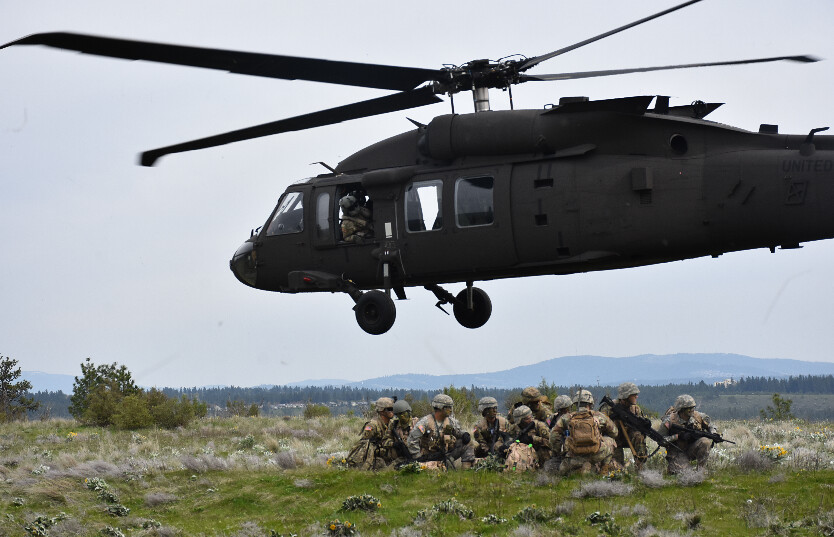
UH-60 Blackhawk helicopter drops off Fighting Eagles Cadets at Camp Seven Mile. (Photo courtesy of Mr. Jerry Mellick)
The Spring FTX was the third in a series of FTX’s to prepare MSIII (junior) Cadets for the rigors of Advanced Camp at Ft. Knox, Kentucky this summer. Advanced Camp is the major training event that all Cadets must pass in order to commission as an officer after their college graduation. The first FTX executed by EWU ROTC focused on individual soldier skills with the Expert Fighting Eagle Badge (EFEB) testing. The second FTX was our Winter FTX that focused on squad level operations (8-10 personnel). The Spring FTX trained Cadets on platoon level operations (30-40 personnel). Being a Platoon Leader is one of the first positions that Cadets will hold in the Army, after they commission as 2nd Lieutenants.
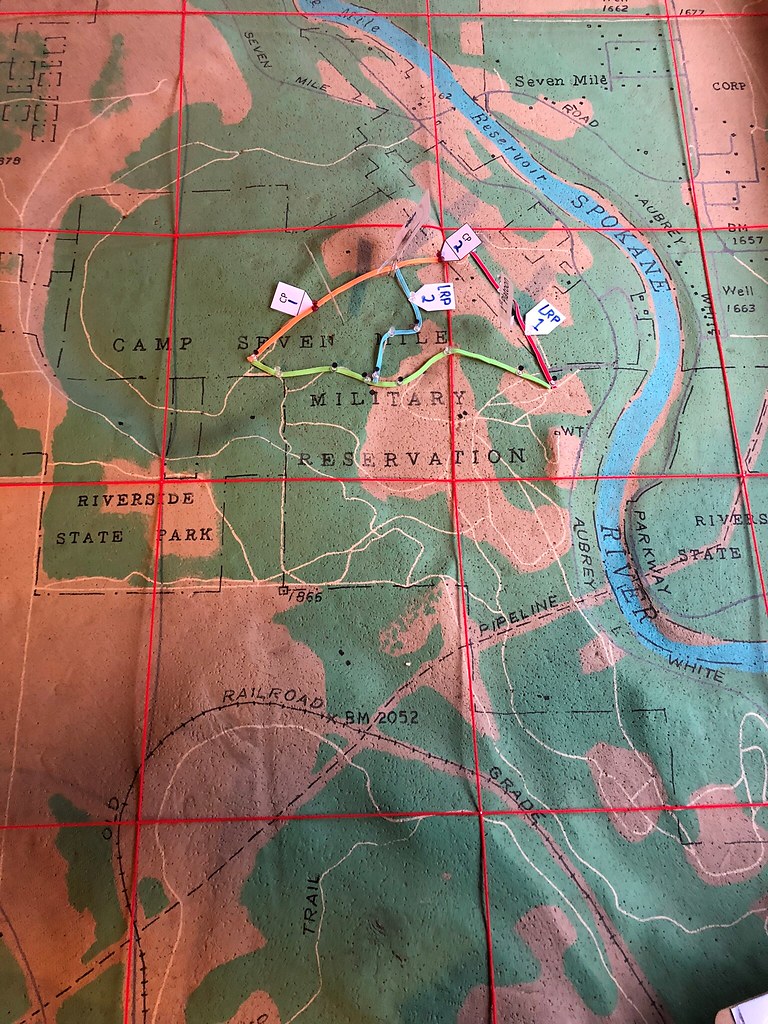
Terrain model of Camp Seven Mile.
The Spring FTX was held at Camp Seven Mile. Camp Seven Mile is military property that is part of Riverside State Park. The camp was established in 1933 to house Civilian Conservation Corps (CCC) workers. After constructing the camp the CCC workers than began building the roads, trails, and replanting trees to create the beautiful state park seen today. In 1942 the CCC program was ended and the land turned over to the military. The land was used to train soldiers that deployed to World War II and the Korean War. The old camp property continues to be used for training purposes by Reserve, National Guard, and ROTC units in the region even though it is managed as part of the Washington State Park system.

The view looking down on the forested land of Camp Seven Mile from the helicopter Landing Zone.

Military boundary sign at Camp Seven Mile.
To make the training at Camp Seven Mile as realistic as possible all the training lanes were modeled after what the Cadets will see at Advanced Camp. As soon as they exited their helicopter, the Cadets immediately began to execute a training lane.

EWU ROTC Cadets pull landing zone security at Camp Seven Mile. (Picture from Mr. Jerry Mellick)
Shortly after leaving the landing zone to conduct their mission each platoon was attacked by Opposing Force (OPFOR) soldiers. We were very fortunate this year to have our OPFOR being executed by Soldiers from the Washington Army National Guard.
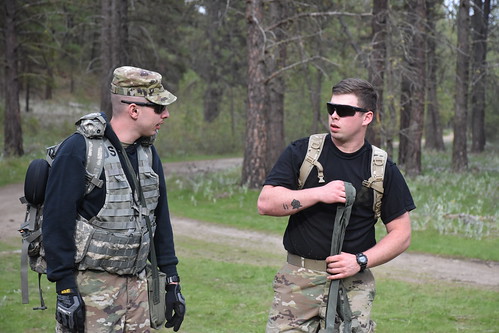
Soldiers form the Washington Army National Guard role play as the Opposing Force (OPFOR) during the EWU ROTC Spring FTX. (Picture from Mr. Jerry Mellick)
During the ambush the Cadets had to execute their react to ambush battle drills they learned in leadership labs earlier in the quarter.
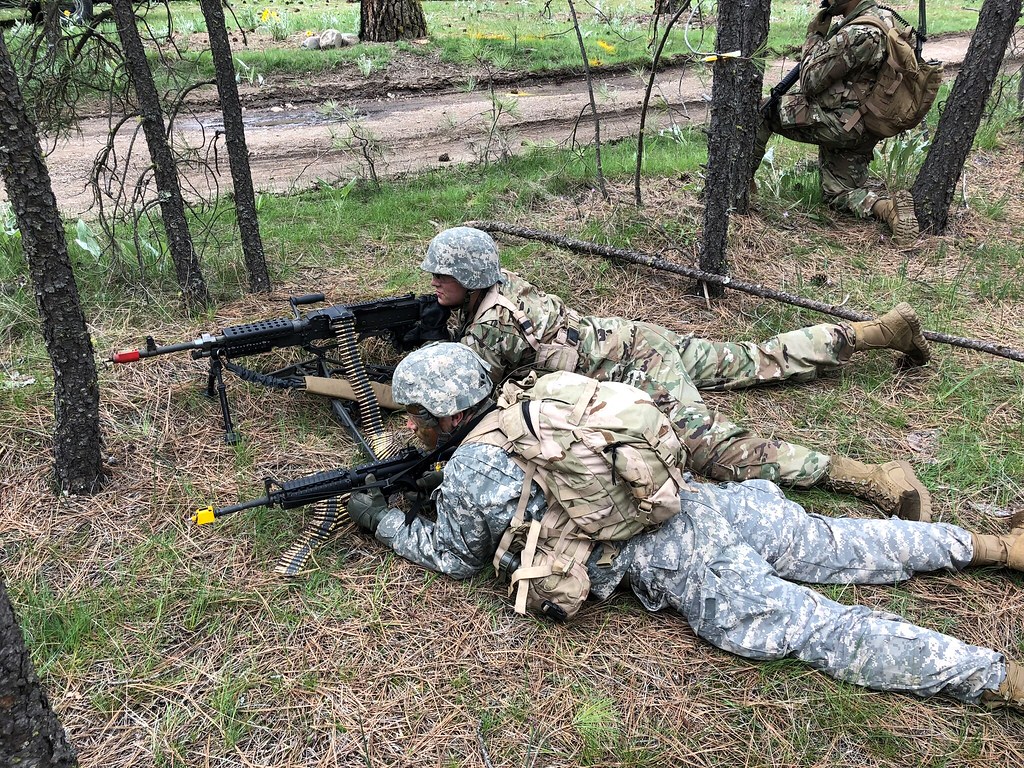
EWU ROTC Cadets react to an ambush.
The Cadets for the FTX were issued M4 rifles and M249 Squad Automatic Weapons (SAW) with blank rounds along with SINCGARS radios. Carrying the real weapons, blank ammunition, and tactical radios allowed the Cadets to experience what it is like to carry the additional weight for an extended period of time. The weapons loaded with blank ammunition also allowed the Cadets to practice weapons safety by enforcing procedures to prevent negligent discharges.

A Cadet pull security at a patrol base with his M4 rifle loaded with blank ammunition.

A Cadet uses a SINCGARS radio during a mission.
Following the react to ambush lane the Fighting Eagles Cadets next participated in a night time land navigation course. Successfully completing day and night land navigation courses are major parts of passing Advanced Camp. The thickly forested Camp Seven Mile provides an area very similar to the conditions the Cadets will experience at Ft. Knox, Kentucky during Advanced Camp.
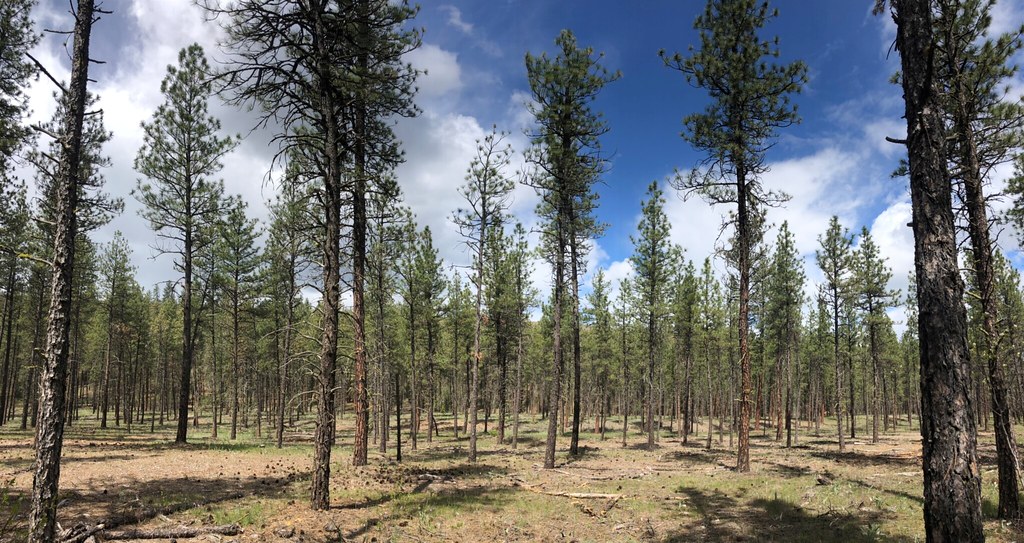
View of the forest at Camp Seven Mile.

MS IV Cadet Jordan Johnson gives a terrain model brief prior to the start of the night time land navigation course.
After the Cadets completed the night time land navigation course each platoon then bedded down for the night within their patrol bases.
Spring FTX Day 2
The next morning the Cadets woke up early to begin a busy day of training.
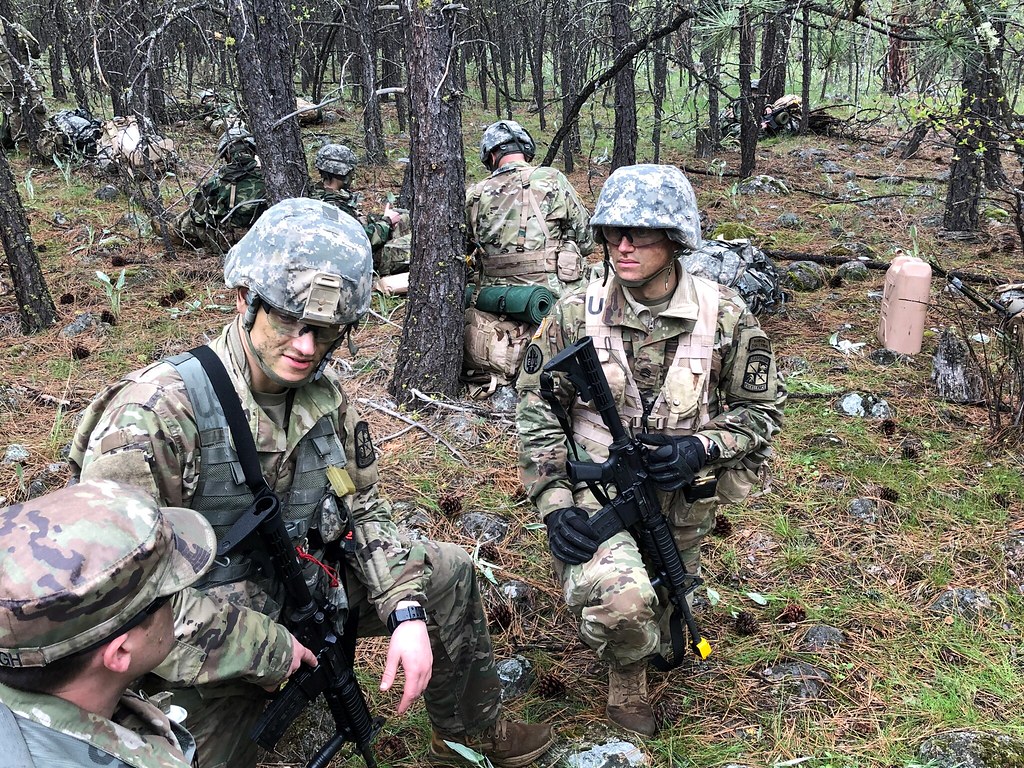
Cadets confer about an upcoming mission in their patrol base.
During Day 2 of the Spring FTX each platoon conducted various ambush, attack, raid, and defense lanes. To add to the realism of the training on Day 2, smoke and artillery simulators were used throughout the day.

OPFOR uses purple smoke to obscure their attack against a patrol base.

Cadets emerge from a cloud of yellow smoke during a raid mission.
To ensure that the MS-III Cadets received the maximum training possible, enough lanes were conducted to where the MS-III’s had a chance to either be a Squad Leader, Platoon Sergeant, or Platoon Leader. These leadership positions are what they will be evaluated on at Advanced Camp this summer. To help them improve in these leadership positions, after every lane an After Action Review was conducted by MS-IV and Cadre observer controllers. An AAR is used to describe what the Cadet did correctly and identify areas of improvement.
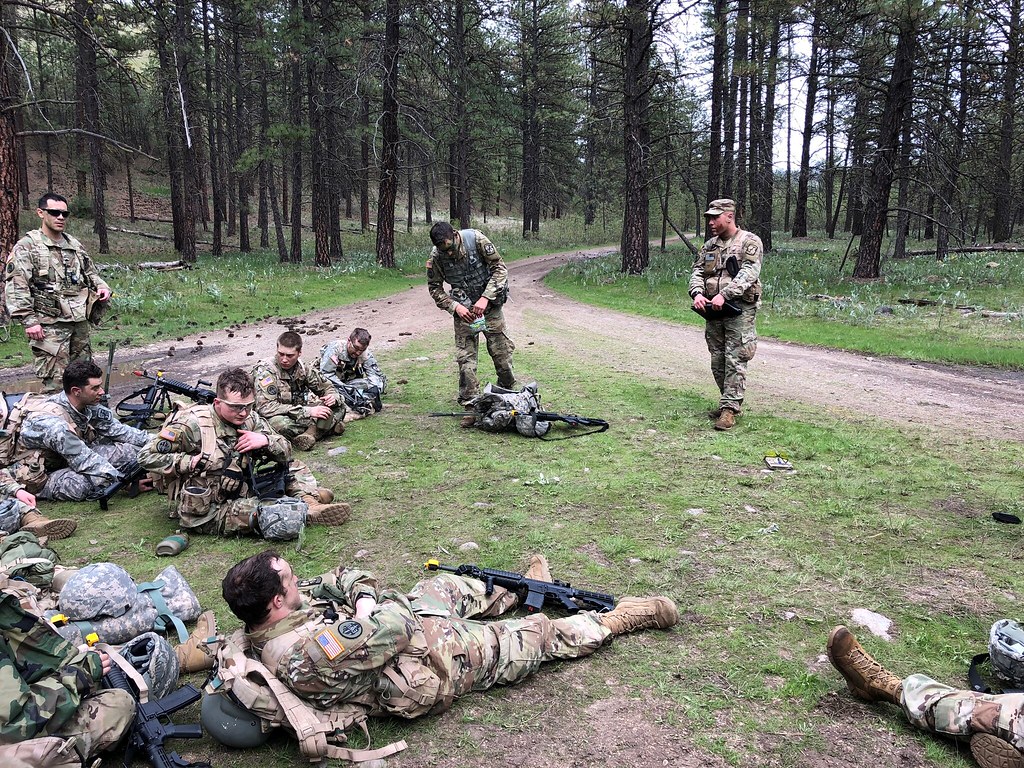
MS-IV Scott Hinshaw conducts an AAR after a platoon raid lane.
Once night came on Day 2 of the Spring FTX, the Cadets again conducted a nighttime land navigation course to give them further practice to master this important individual Soldier skill.
Spring FTX Day 3
On Day 3 of the Spring FTX, the platoons from the Fighting Eagles battalion each conducted one more training lane on that morning. The completion of the training lane concluded the platoon training portion of the Spring FTX.

EWU ROTC Cadets return fire during Day 3 of the Spring FTX.

An EWU ROTC Cadet reacts to contact during Day 3 of the Spring FTX.
During the execution of all these training lanes, each of the platoons had to call up their reports to the Tactical Operations Center (TOC). At the TOC, MS-IV Cadets took the reports and coordinated food, water, and ammunition resupply requested by the platoons. The TOC operations provided added realism to the training and practical TOC experience for our MS-IV Cadets.

Cadet Erling Anderson answers the radio at the TOC at Camp Seven Mile.
The final training event for Day 3 was for the Cadets to conduct a daytime land navigation course. For daytime land navigation, each Cadet had to find more points over a more expansive area than the nighttime course. The distances between points caused the land navigation course to not only be mentally challenging, but physically challenging as well. After already being out in the field for three days the daytime land navigation course was one last challenge that pushed the Cadets to reach new limits of their own personal endurance and resiliency.

View of the terrain used for the daytime land navigation course.

EWU ROTC Cadet conducts the daytime land navigation course at Camp Seven Mile.
After the completion of the land navigation course the exhausted Cadets were then transported by bus back to Cadet Hall at the EWU Campus. At Cadet Hall a well deserved dinner of Italian food was waiting for the hungry Cadets.

Cadets enjoy eating an Italian dinner at the conclusion of the Spring FTX.

EWU ROTC Cadets enjoy plates of noodles after completion of the Spring FTX.
Conclusion
The Spring FTX was a great success that provided great training in platoon level operations to the EWU ROTC Cadets. Our Cadets also received important training in day and night land navigation. Most importantly it provided our MS-III Cadets an opportunity to rotate through the leadership positions they will be evaluated on at Advanced Camp this summer. Their performance at the Spring FTX indicates that they are well prepared and ready to excel at Advanced Camp.
Go ROTC! Go Fighting Eags!
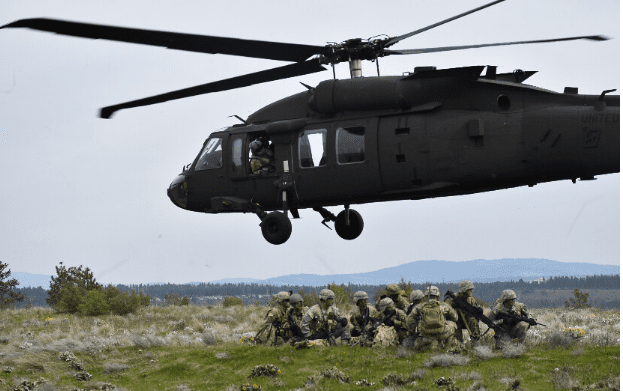
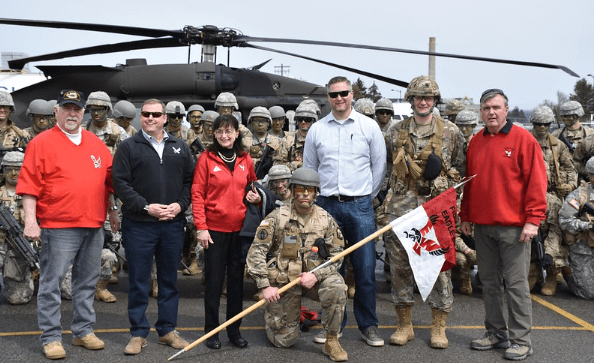

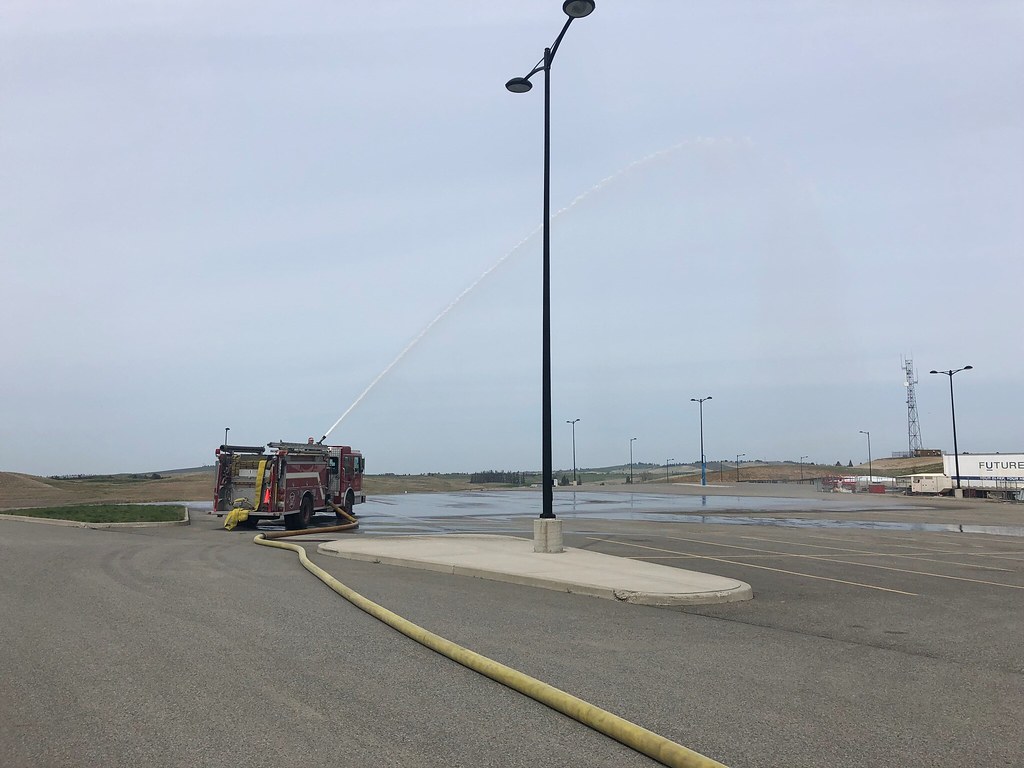







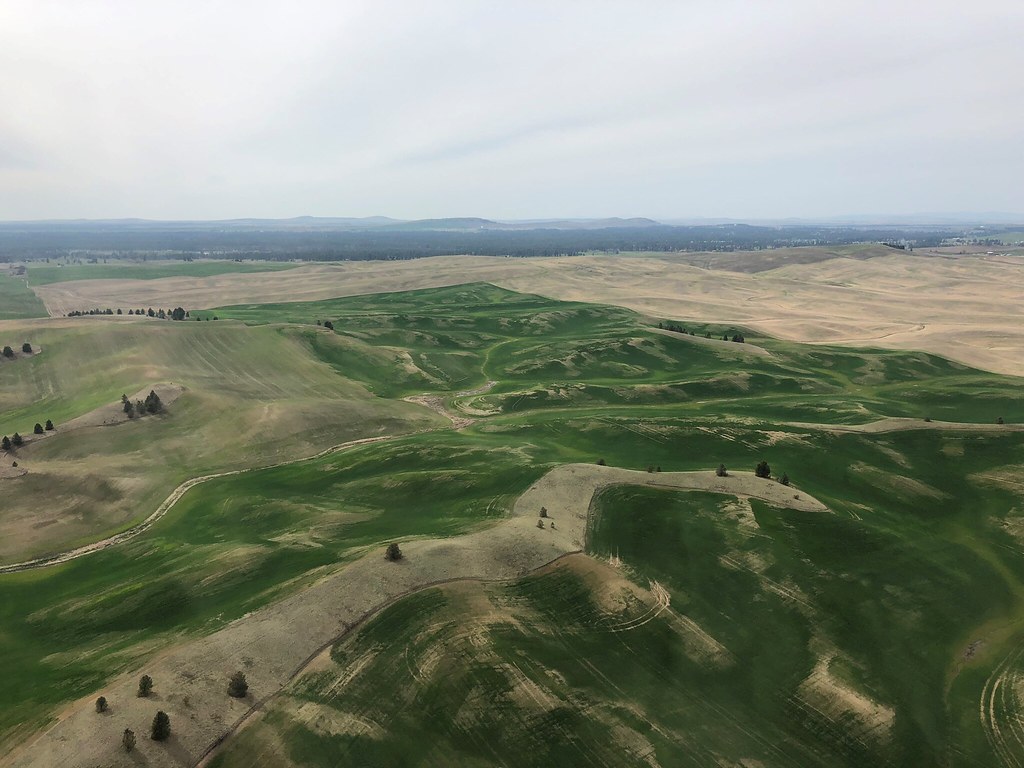



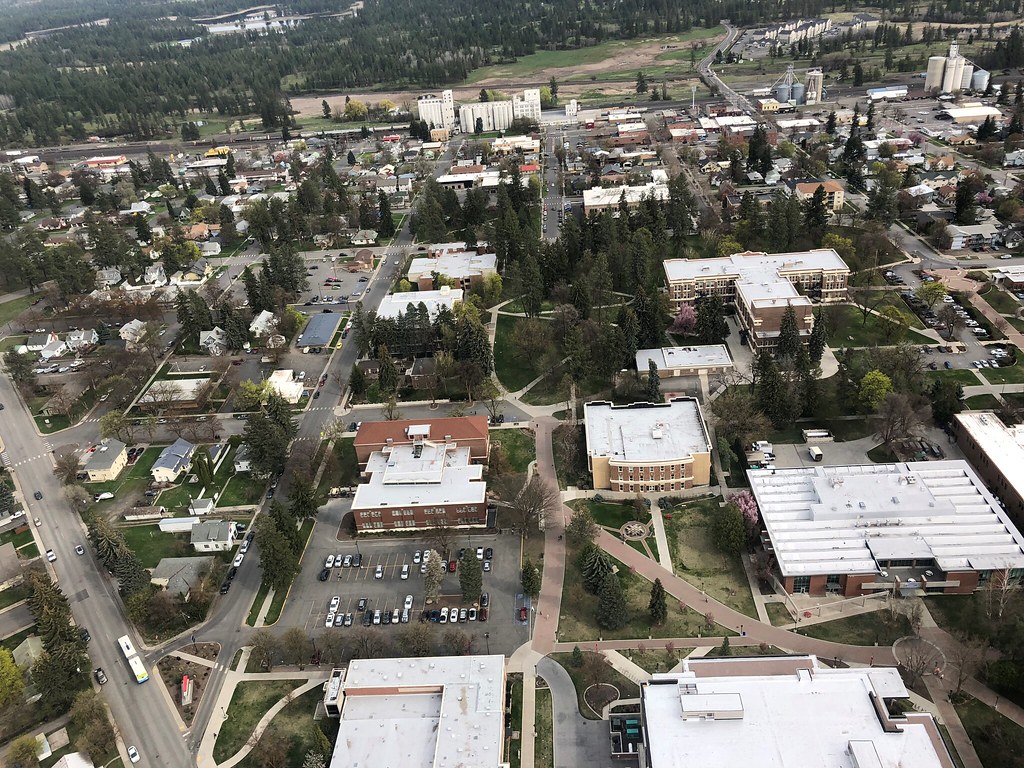



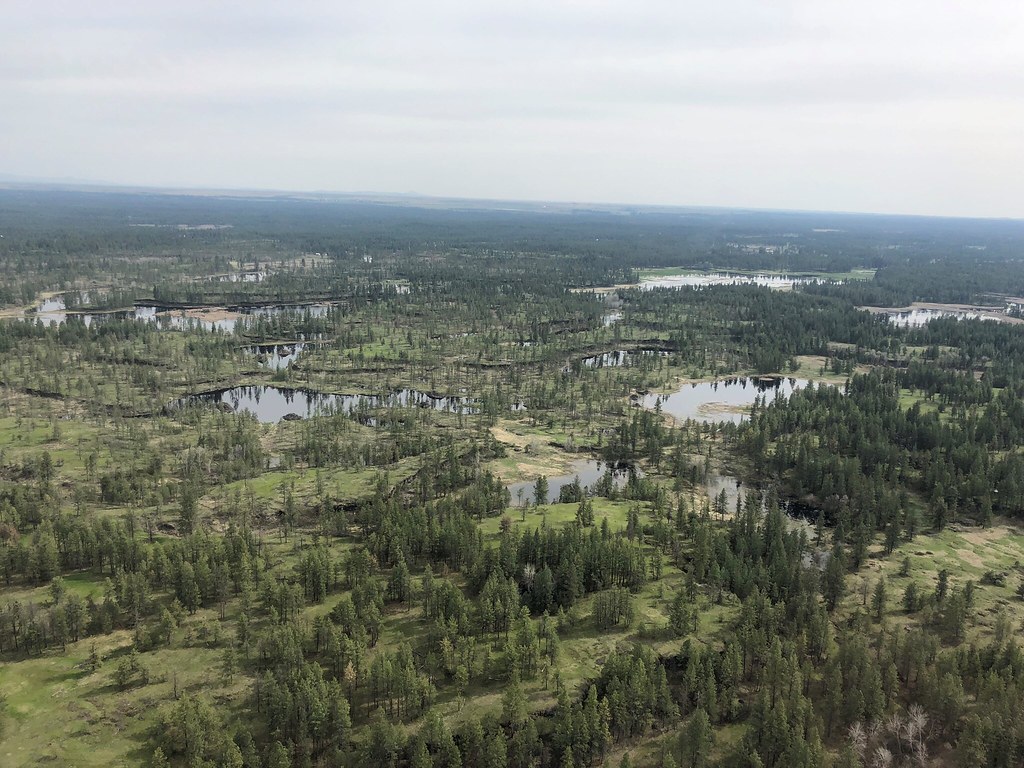





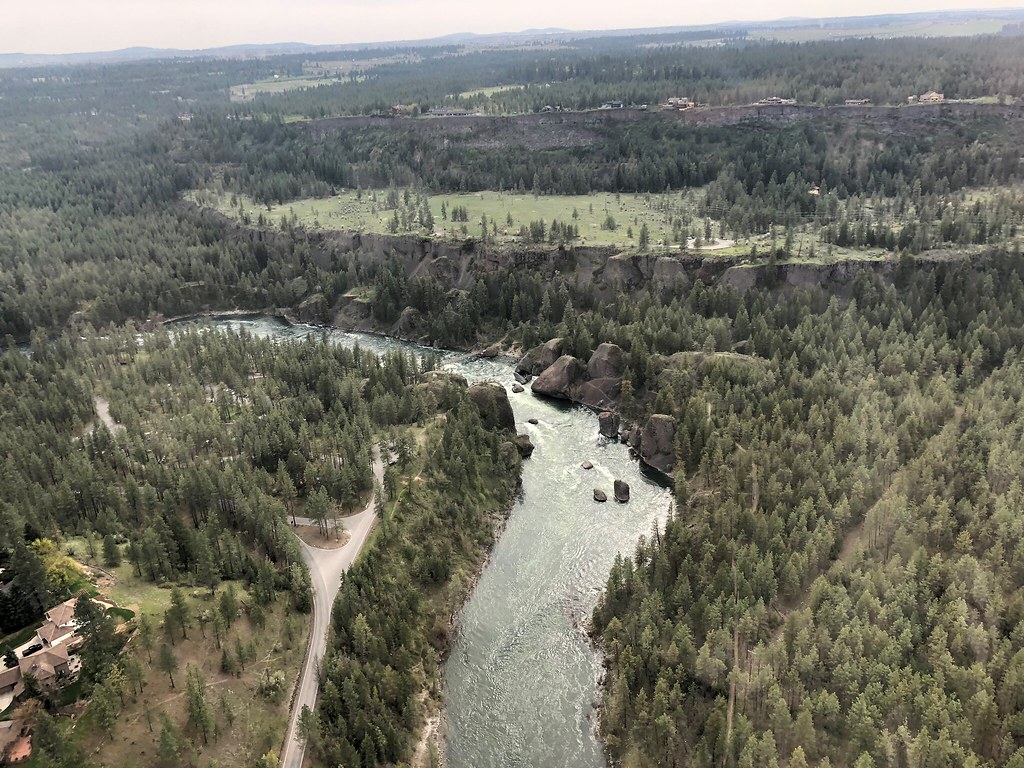


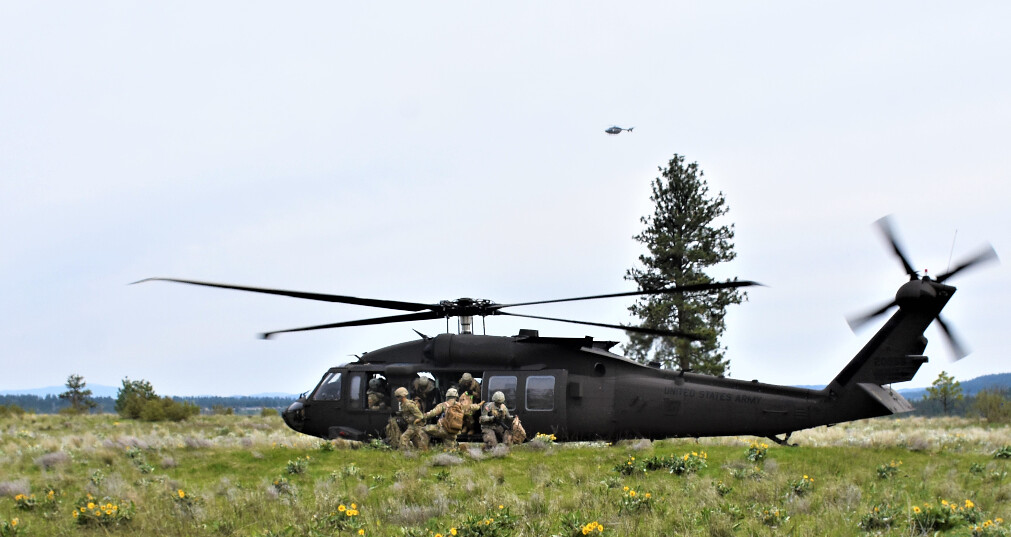
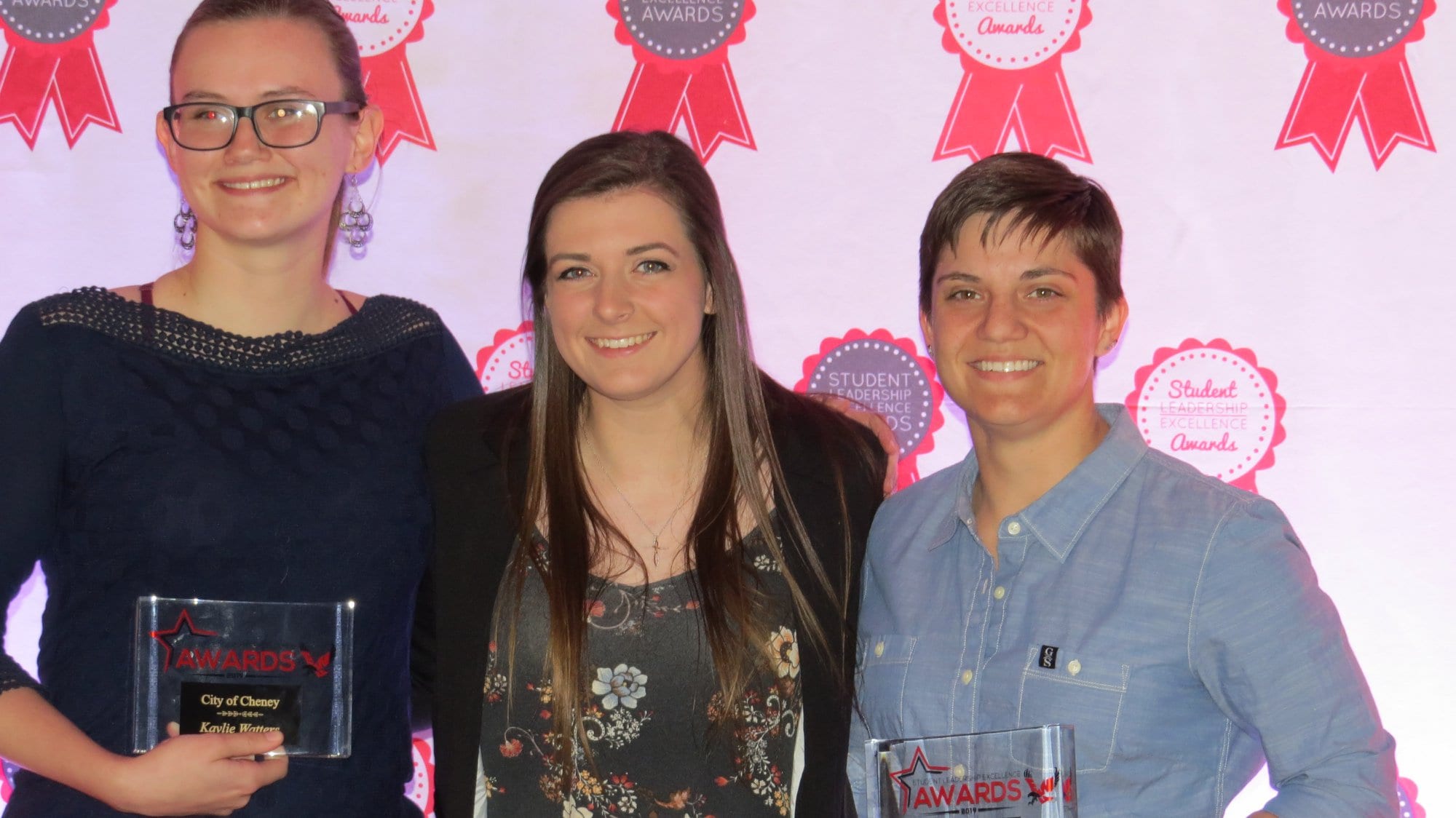





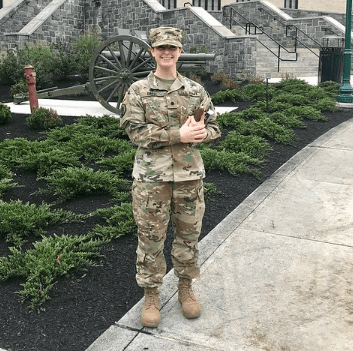
 EWU ROTC Cadet, Haley Bent attends the Mission Command Conference at the US Military Academy.
EWU ROTC Cadet, Haley Bent attends the Mission Command Conference at the US Military Academy.
